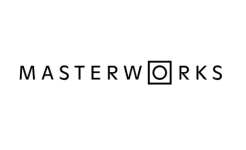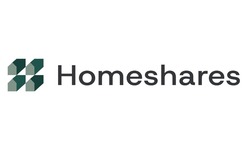Purchase art as an investment
It’s easy to see why great works of art tend to appreciate in value — especially during times of inflation. Supply is limited, and many famous pieces have already been snatched up by museums and collectors.
In 2022, shortly after inflation reached a 40-year high, the art collection of late Microsoft co-founder Paul Allen sold for a total of $1.5 billion at Christie’s New York, making it the most valuable private collection of all time.
Investing in art was traditionally a privilege reserved for the ultra-wealthy.
Now, that’s changed with Masterworks – a platform for investing in shares of blue-chip artwork by renowned artists, including Pablo Picasso, Jean-Michel Basquiat, and Banksy. It's easy to use, and with 23 successful exits to date, every one of them has been profitable thus far.
Simply browse their impressive $1 billion portfolio of paintings and choose how many shares you’d like to buy. Masterworks will handle all the details, making high-end art investments both accessible and effortless.
Masterworks has already sold roughly $45 million worth of art, distributing the net proceeds to everyday investors. New offerings have sold out in minutes, but you can skip their waitlist here.
How it works
Step 1: Accredited investors need to visit Masterworks.com, where they’ll be prompted to enter a few details about their portfolio and investment goals.
Step 2: Investors can schedule a call with one of Masterworks Advisers — registered investment representatives — to determine which current art holdings match their investment goals. The benefit is that you can select one or many art pieces, buying fractional shares based on your interests and goals.
Step 3: As soon as Masterworks sells a piece you invested in, you get a return from the net proceeds. While every artwork performs differently, overall, the past three exits — where Masterworks has acquired, held and eventually sold the artwork — delivered median returns of 17.6%, 17.8%, and 21.5%.
See important Regulation A disclosures at Masterworks.com/cd
Store your wealth in precious metals
Gold is another popular hedge against inflation.
The reason is straightforward: the yellow metal can’t be printed in unlimited quantities by central banks like fiat money. And because its value isn’t tied to any one currency or economy, gold could provide protection during periods of economic uncertainty. When inflation erodes the purchasing power of fiat currencies, gold's appeal as a stable store of value often grows, driving up demand.
Gold prices reached an all-time high of $2,790.07 in October 2024 and currently sits around $3,000 per ounce as of mid-April 2025.
One way to invest in gold that also provides significant tax advantages is to open a gold IRA with the help of Thor Metals.
Gold IRAs allow investors to hold physical gold or gold-related assets within a retirement account, thereby combining the tax advantages of an IRA with the protective benefits of investing in gold, making it an attractive option for those looking to potentially hedge their retirement funds against economic uncertainties.
To learn more, you can get a free information guide that includes details on how to get up to $20,000 in free metals on qualifying purchases.
Invest in real estate to hedge against inflation
When inflation rises, property values often increase as well, reflecting the higher costs of materials, labor and land.
At the same time, rental income tends to go up, providing landlords with a revenue stream that adjusts for inflation.
This combination makes real estate an attractive option for preserving and growing wealth during periods of escalating price levels.
Over the last five years, the S&P CoreLogic Case-Shiller U.S. National Home Price NSA Index has surged by more than 50%.
You can also invest in real estate by purchasing rental properties and becoming a landlord.
For accredited investors, Homeshares gives access to the $36 trillion U.S. home equity market, which has historically been the exclusive playground of institutional investors.
With a minimum investment of $25,000, investors can gain direct exposure to hundreds of owner-occupied homes in top U.S. cities through their U.S. Home Equity Fund — without the headaches of buying, owning or managing property.
With risk-adjusted internal returns ranging from 12% to 18%, this approach provides an effective, hands-off way to invest in owner-occupied residential properties across regional markets.
If you’re not an accredited investor, crowdfunding platforms like Arrived allows you to enter the real estate market for as little as $100.
Arrived offers you access to shares of SEC-qualified investments in rental homes and vacation rentals, curated and vetted for their appreciation and income potential.
Backed by world-class investors like Jeff Bezos, Arrived makes it easy to fit these properties into your investment portfolio regardless of your income level. Their flexible investment amounts and simplified process allows accredited and non-accredited investors to take advantage of this inflation-hedging asset class without any extra work on your part.














